Revision Notes for CBSE Class 10 Science Chapter 6: Revision notes come in handy at the time of examination when one is required to revise the whole syllabus in a short time. But students should be careful with the study material they are choosing for revision. The revision notes must be curated in a concise yet comprehensive manner so that you do not miss any important information given in a chapter. Jagran Josh presents here the revision notes for CBSE Class 10 Science which are best structured and explained by subject experts. These notes are prepared according to the revised syllabus keeping in mind the topics that have been removed from syllabus hence best for the CBSE Board Exams 2024 preparations.
In this article, you will get the CBSE Class 10 Science Revision Notes for Chapter - Control and Coordination. We have included all important concepts in these short notes to help you revise the chapter effectively and prepare for the class tests and annual board examinations in the best possible way.
Also Read|
CBSE Class 10 Science Deleted Syllabus 2023-24
CBSE Class 10 Science Sample Paper 2023-24
Revision Notes for CBSE Class 10 Science Notes for Chapter 4 Control and Coordination:
Control and Coordination in Animals
It is brought about in all animals with the help of two main systems
(a) Nervous System
(b) Endocrine System
Nervous System: Consists of brain, spinal network and a huge network of nerves.
It helps to
(i) receive the information from environment
(ii) receive the information from various body parts.
(iii) act accordingly through muscles and glands.
Stimulus: Any change in environment to which the organisms respond is called stimulus. For example: touching a hot plate.
Response: The reaction of our body to a stimulus. E.g. withdrawal of our hand on touching hot plate.
Coordination: The working together of various organs of the body of an organism in a proper manner to produce appropriate reaction to a stimulus is called coordination.
Receptors: They are specialized tips of some nerve cells that detect the information from the environment. Receptors are sense Organs.
Neuron: It is the structural and functional unit of nervous system.
They are electrically excitable cells in the nervous system that function to process and transmit information.
In vertebrate animals, neurons are the core components of the brain, spinal cord and peripheral nerves.
Major parts of neuron include:
- soma (cell body)
- axon (transmits electrical impulses away from the cell body)
- dendrites (tree-likestructures that receive messages from other neurons)
- synapses (specialized junctionsbetween neurons)
Structure of Neuron
Reflex Action
Reflex action is an automatic response of the body to a stimulus. For example, withdrawal of hand on touching a hot plate.
Reflex arc: The pathway taken by nerve impulses in a reflex action is called reflex arc.
Voluntary Actions: They are performed under the control of a person (e.g. writing)
Involuntary Actions: They are not under the control of a person. (e.g. heartbeat)
Mechanism of Reflex action: A reflex mechanism involves a receptor organ, an effector organ, and some type of communication network. When a sensory receptor is stimulated, signals pass from it along a sensory neuron to the spinal cord. The message travels out of the spinal cord along a motor neuron to the effector organ (e.g., a muscle or a gland), which shows the response.
HUMAN NERVOUS SYSTEM
The nervous system of vertebrates (including humans) is divided into the central nervous system (CNS) and the peripheral nervous system (PNS).
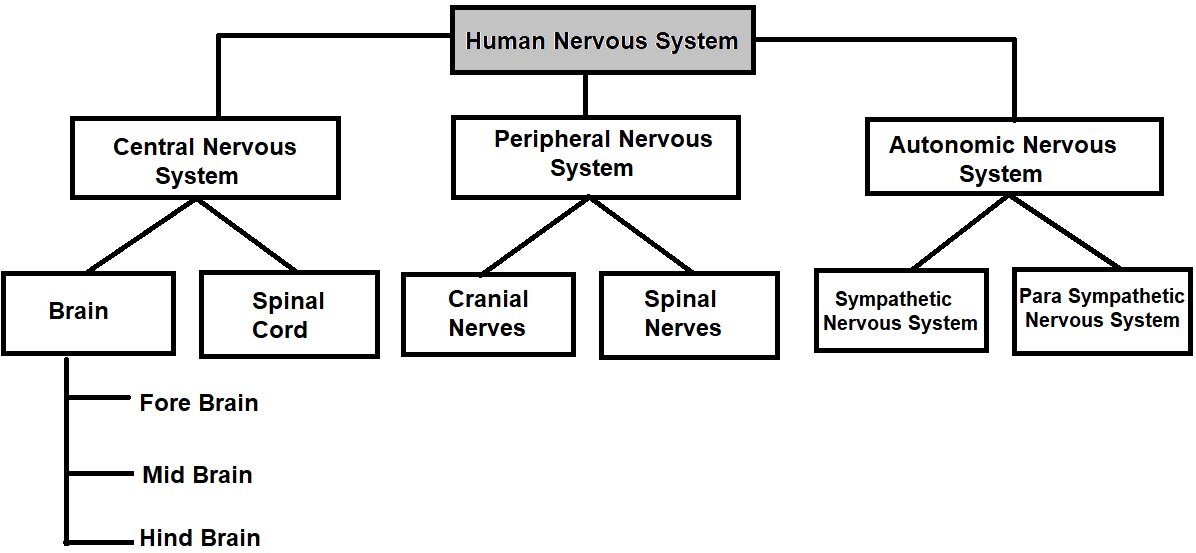
Human Brain : It is enclosed in cranium (brain box) and is protected by cerebrospinal fluid which acts as a shock absorber.
Human brain has three major parts or regions:
(a) Fore-brain
(b) Mid Brain
(c) Hind Brain
(a) Fore-brain (CEREBRUM)
Most complex/specialized part of the brain is Cerebrum or the forebrain.
Functions
- Thinking part of the brain
- Control the voluntary actions.
- Store information(Memory)
- Centre associated with HUNGER
- Receives sensory impulses from various body parts and integrates it
(b) Mid Brain
It connects the fore-brain with the hind-brain. It is the portion of the central nervous system associated with vision, hearing, motor control, sleep/wake, arousal (alertness), and temperature regulation.
(c) Hind Brain
It has three parts:
- Cerebellum: It maintains posture and balance of body. It controls body movement and voluntary actions.
(ii) Medulla: It controls invlountary actions like blood pressure, vomiting, salvation, etc.
(iii) Pons: It controls involuntary actions like regulation of respiration
⇨ Brain is protected by a fluid called cerebro-spinal fluid which acts as shock absorber. It has several layers called MENINGES.
⇨ It receives input from the sensory organs and sends output to the muscles.
⇨ Spinal Cord is enclosed in Vertebral column.
Coordination In Plants:
Hormones: They are chemical compounds which help to coordinate growth, development and responses to the environment.
PLANT HORMONES
Main plant hormones are :
(a) Auxin: It is produced in the stem.It promotes cell elongation.
(b) Gibberellin : It regulates growth and influences various developmental processes, including stem elongation, germination, flowering, etc.
(c) Cytokinins: They promote cell division and are involved primarily
in cell growth.
(d) Abscisic acid (Stress hormone): It inhibits growth, cause wilting of leaves.
HORMONES IN ANIMALS
Hormones are the chemical substances secreted by the endocrine glands and transmitted by the blood to the tissues on which it has a specific effect.
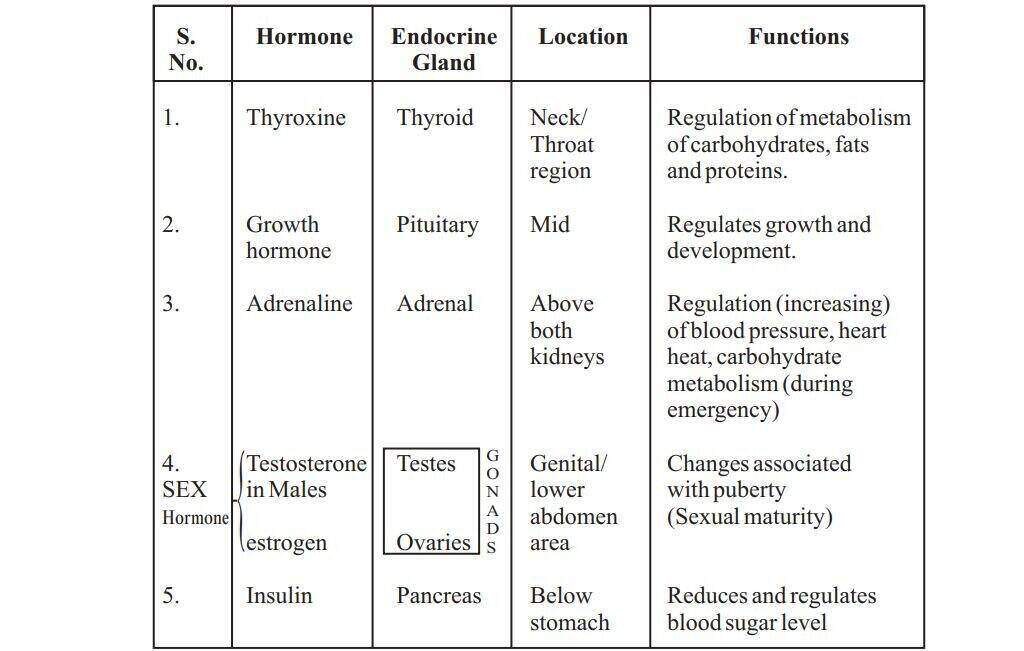
Why is iodised salt recommended?
Iodised Salt is Necessary because thyroid gland needs iodine to make thyroxine which helps in regulating the metabolism of carbohydrates, fats and proteins. Deficiency of iodine cause a disease called goitre.
Diabetes
Cause: It is due to deficiency of Insulin hormone secreted by Pancreas that is responsible to lower/control the blood sugar levels.
Treatment: Common diabetes can be controlled by medicine but in severe cases Injections of insulin hormone are given to the patients.
Feedback Mechanism
Feedback mechanism makes sure that hormones are secreted in precise quantities and at right time.
Also Read:
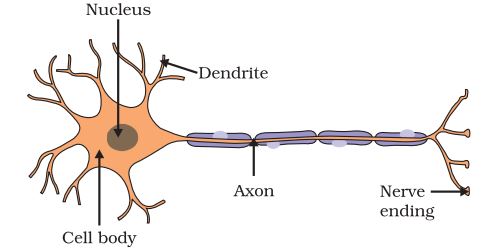
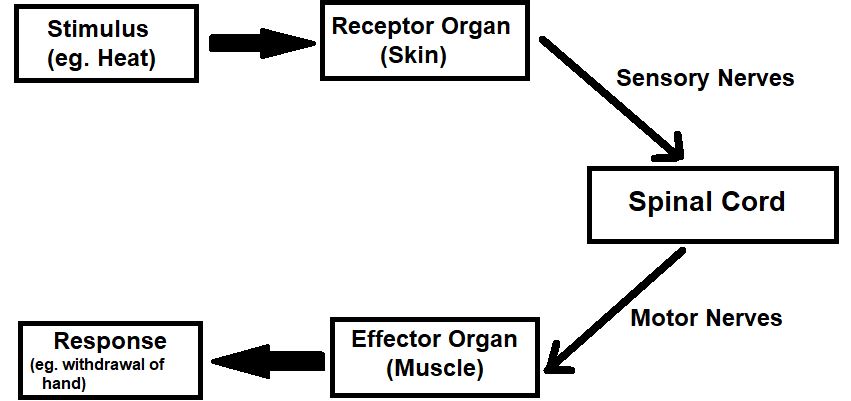
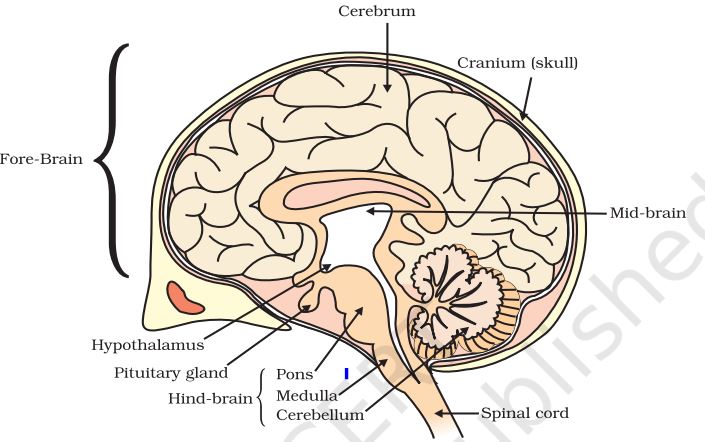
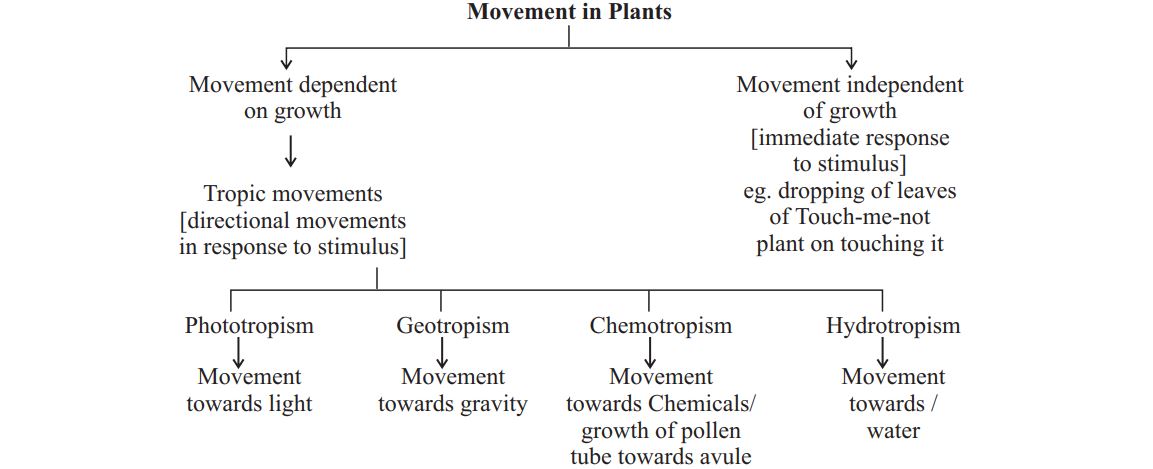
Comments
All Comments (0)
Join the conversation